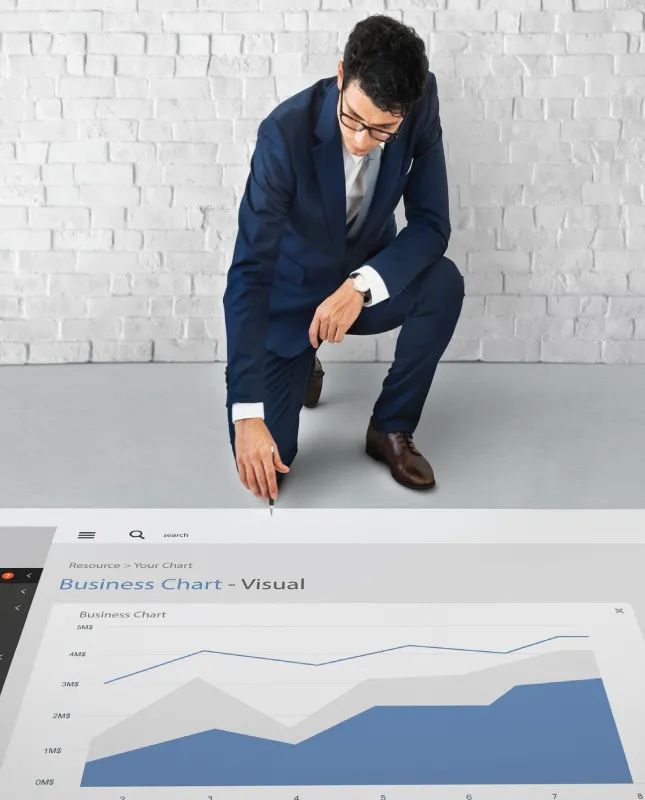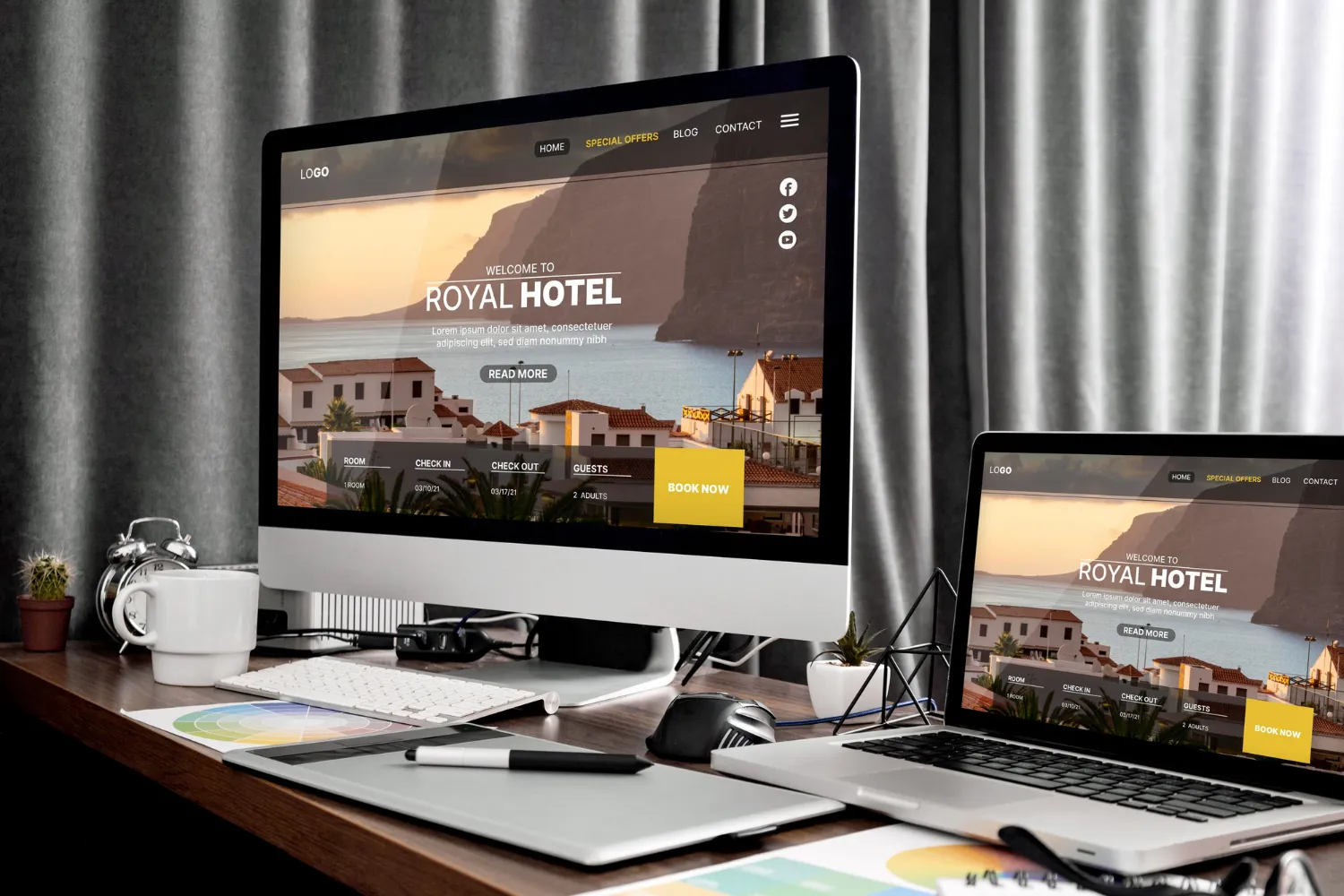Local SEO Mastery
Connect, Convert, Succeed
Welcome to the exciting world of website design! Whether you’re a novice looking to create a website or an experienced professional looking to optimize your online presence, understanding the fundamentals of SEO-friendly web design is key. With a little effort and a few simple steps, you can ensure that your website stands out and captures your target audience.
In this beginner’s guide, we’ll explore some of the essential elements of SEO-friendly web design, from understanding the basics of SEO and keyword optimization to developing an effective website structure and design. So, get ready to learn the basics of web design and unleash your creativity!
Your website is often the first point of contact for potential customers or clients. It’s your digital storefront, representing your brand and conveying your message. So, it’s crucial to have a website that not only looks professional but also effectively communicates your purpose.
A well-designed website is essential for establishing credibility and building trust with your audience. When visitors land on your website, they form an impression within seconds. If your website is outdated, cluttered, or difficult to navigate, they are likely to leave and look for a more visually appealing and user-friendly alternative.
Responsive design is another crucial element of web design. With the increasing use of mobile devices, having a website that adapts seamlessly to different screen sizes is a must. Studies have shown that mobile-friendly websites are more likely to engage users and keep them on the site for longer periods.
By investing in professional Web Creation, you can ensure that your online presence stands out from the competition. A web design agency or an affordable web design company can help you create a visually stunning and user-friendly website that aligns with your brand identity.

Understanding the basics of SEO-friendly design is crucial in today’s digital landscape. SEO, or search engine optimization, is the practice of optimizing your website to rank higher in search engine results pages. By implementing SEO-friendly design elements, you can increase your website’s visibility and attract more organic traffic.
One of the first things to consider in SEO-friendly design is the structure and layout of your website. A well-organized and user-friendly site not only helps visitors navigate easily but also allows search engines to crawl and index your pages more effectively. Additionally, incorporating relevant keywords into your website’s content is essential for SEO. By conducting keyword research and strategically placing these keywords throughout your site, you can improve your chances of ranking higher in search results.
Another crucial element of SEO-friendly design is responsive design. With the rise in mobile device usage, it’s imperative that your website is optimized for different screen sizes. Google and other search engines prioritize mobile-friendly websites in their search results, so having a responsive design is essential for your site’s success.
To achieve these SEO-friendly design elements, it may be beneficial to seek professional assistance. A Web Creation agency or an affordable Web development company can help you create a visually stunning and user-friendly site that aligns with your brand identity and incorporates best practices for SEO.
Overall, understanding the basics of SEO-friendly design is vital for improving your website’s visibility and attracting more organic traffic. By incorporating these design elements, you can enhance your online presence and reach your target audience effectively.
Brand Strategy & Research
Brand Identity & Advertising
Website Design and Development
Planning your website’s structure and navigation is a crucial step in creating a user-friendly and intuitive experience for your visitors. The structure of your website determines how information is organized and presented, while navigation refers to the menus, links, and buttons that help users navigate through your site.
When planning your website’s structure, start by considering the main pages or sections that you want to include. These could be your homepage, about us page, services or products page, blog, and contact page. Think about the hierarchy of these pages and how they should be grouped. This will help you create a logical and organized structure that makes it easy for users to find the information they need.
Next, focus on the navigation of your website. Your navigation menu should be clear, visible, and easy to understand. Use concise and descriptive labels for each menu item, and consider using dropdown menus or submenus if you have a large number of pages or categories.

To achieve the best results, consider working with a professional Web Development and Design agency or an affordable website design company. We can help you create a user-friendly and visually stunning website that aligns with your goals and engages your audience.
By implementing best practices for website content and layout, you can ensure that your website stands out among the sea of competitors and leaves a lasting impression on visitors. So, invest in a professional web design and watch your online presence thrive.
Choosing the right keywords for your website is a crucial step in optimizing your content for search engines. Keywords are the terms or phrases that users enter into search engines when looking for information or solutions. By incorporating relevant keywords into your website’s content, you can increase your chances of ranking higher in search results and attracting more organic traffic.


To choose the right keywords, start by understanding your target audience and their search intent. Consider what keywords they might use when looking for products, services, or information related to your website. Conduct keyword research using tools like Google Keyword Planner or SEMrush to identify popular and relevant keywords in your industry.
Once you have a list of potential keywords, consider their search volume and competition. Aim for keywords with a good search volume but low competition to maximize your chances of ranking well. Additionally, consider long-tail keywords, which are more specific and targeted, to attract users with a higher intent to convert.
When incorporating keywords into your website’s content, avoid keyword stuffing. Instead, focus on the natural and seamless integration of keywords into your titles, headings, meta tags, and body content. Write high-quality and engaging content that provides value to your audience, while still incorporating relevant keywords.
Remember, choosing the right keywords is an ongoing process. Monitor your website’s performance and adapt your keyword strategy accordingly. By continually optimizing your content with the right keywords, you can improve your website’s visibility and attract the right audience to your website. So, take the time to research and choose the best keywords for your website, and watch your online presence soar.
Site navigation is a crucial aspect of SEO-friendly website design. It refers to the menu or navigation bar that allows users to easily navigate through different sections and pages of a website. A well-designed site navigation enhances user experience by making it easy for visitors to find what they are looking for.
To optimize site navigation for SEO, it is important to keep it simple, intuitive, and organized. The menu should be easy to locate and understand, with clear labels that accurately represent the content of each page. It is also advisable to use descriptive keywords in the navigation labels to improve search engine visibility.

Mobile responsiveness is another important factor in site navigation. With the increasing use of mobile devices, it is essential that the website’s navigation adapts and remains usable on smaller screens. Responsive design ensures that users can easily access and navigate the website regardless of the device they are using.
At Local SEO Agency, we are dedicated to providing you with the expertise and support you need to succeed in the competitive online landscape. With our Local Search Engine Optimization services, you can elevate your business, increase your visibility, and attract more customers from your local area. So why wait? Contact us today and let’s get started on taking your Canadian business to new heights with our Local Search Engine Optimization expertise.
On-page optimization is a critical aspect of SEO-friendly website design. It refers to the various strategies and techniques used to optimize individual web pages in order to improve their visibility and rankings in search engine results. While site navigation and image optimization focus on the overall user experience, on-page optimization specifically targets the content and HTML source code of each page.
One important factor to consider in on-page optimization is keyword research. This involves identifying the keywords and phrases that are relevant to your website and target audience. By incorporating these keywords strategically into your page titles, headings, and content, you can improve your website’s relevance to search queries and increase your chances of ranking higher in search engine results.


In addition to keyword optimization, on-page optimization also involves optimizing meta tags, including the meta title and meta description. These meta tags provide a brief summary of your web page's content to search engines and users. By writing compelling and relevant meta tags that include targeted keywords.

Enhancing User Experience through On-Page Load Time Optimization
Furthermore, optimizing your website's load time is crucial for on-page optimization. Slow-loading web pages can negatively impact user experience and increase bounce rates. By compressing images, minifying CSS and JavaScript files, and utilizing browser caching, you can significantly improve your website's load time and provide a smoother browsing experience for your visitors.

In summary, on-page optimization plays a crucial role in improving your website's visibility and rankings in search engine results. By implementing keyword research, optimizing meta tags and URLs, and improving load time, you can enhance the overall SEO-friendliness of your website and attract more organic traffic. Remember, effective on-page optimization goes hand in hand with high-quality and relevant content.

Image optimization is a crucial aspect of SEO-friendly web design. It involves optimizing the images on your website to improve user experience and search engine rankings. By optimizing your images, you can reduce their file size and load time, which not only improves website performance but also enhances user experience.

One of the key elements of image optimization is compressing the images. This reduces the file size without sacrificing image quality. There are various tools and plugins available that can help you compress your images without losing visual appeal. By reducing the file size, you can improve page load time and provide a smoother browsing experience for your visitors.

Another aspect of image optimization is choosing the right file format. Different file formats have different characteristics and are suitable for different types of images. For example, JPEG is best for photographs, while PNG is better for graphics and images with transparency.

Link building is an essential component of SEO-friendly website design. It involves the process of acquiring external links from other websites to your own. These backlinks act as votes of confidence from other sites, indicating to search engines that your website is authoritative and trustworthy.
To build high-quality backlinks, it’s important to focus on creating valuable and shareable content that naturally attracts links from other sites. This can include creating informative blog posts, publishing guest articles on relevant websites, or participating in industry forums and discussions. Building relationships with influencers and engaging with your target audience on social media can also help attract backlinks.
Additionally, it’s important to monitor your backlink profile and disavow any low-quality or spammy links that may negatively impact your website’s rankings. Building a strong and diverse backlink profile takes time and effort, but it can significantly improve your website’s visibility and search engine rankings.
Resources
